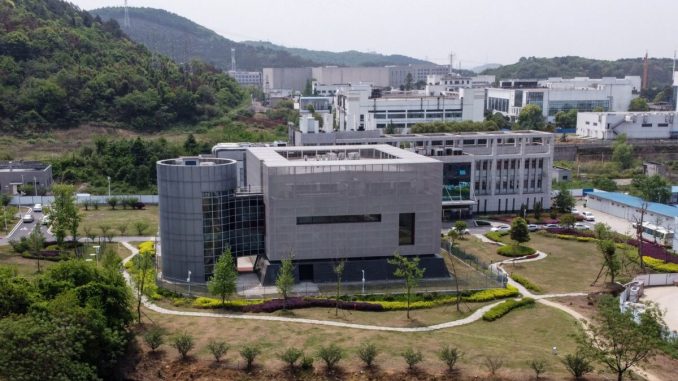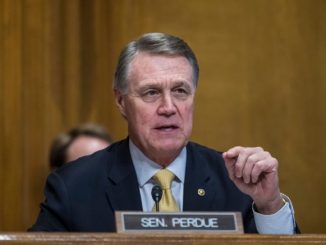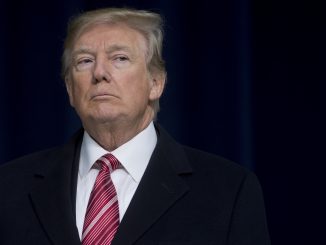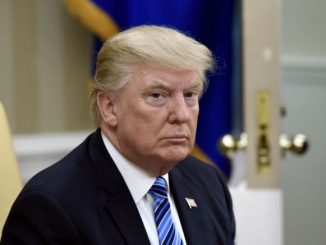
Commentary
Wuhan Institute of Virology (WIV) lab researchers went to the hospital in November 2019 with symptoms consistent with both seasonal flu and COVID-19, according to a U.S. intelligence report newly revealed by the Wall Street Journal on May 23. Three of the researchers were sufficiently sick to seek hospital care, according to the report. The Journal wrote that the report “could add weight to growing calls for a fuller probe of whether the COVID-19 virus may have escaped from the laboratory.” Darn right.
The new evidence also adds weight to a conclusion that WIV’s leading researcher, Dr. Shi Zhengli, was lying or evading when she said that SARS-CoV-2 did not leak from her lab.

The former official who led a Pompeo task force into the virus origins, David Asher, alluded to evidence in the report at the Hudson Institute in March. He said that he doubted that the ordinary flu made three researchers sick. “I’m very doubtful that three people in highly protected circumstances in a level three laboratory working on coronaviruses would all get sick with influenza that put them in the hospital or in severe conditions all in the same week, and it didn’t have anything to do with the coronavirus,” he told seminar participants. He said he believes that these hospitalizations of lab researchers could be “the first known cluster” of the COVID-19 disease.
According to the Journal, “Many proponents of the lab hypothesis say that a virus that was carried by an infected bat might have been brought to the lab so that researchers could work on potential vaccines—only to escape.” The timing of the WIV researcher hospitalizations matches analyses of SARS-CoV-2’s rate of mutation. The analyses concluded that the virus likely began spreading sometime in November, several weeks before the first known case on Dec. 8.
According to the first of two Pompeo-era State Department fact sheets that had the benefit of drawing from classified intelligence, the “U.S. government has reason to believe that several researchers inside the WIV became sick in autumn 2019, before the first identified case of the outbreak, with symptoms consistent with both Covid-19 and seasonal illnesses.” The State Department’s second fact sheet, released on Jan. 15, stated that this “raises questions about the credibility” of Dr. Shi Zhengli. In other words, the State Department likely believed that the good doctor was lying. The fact sheet was additionally critical of Beijing’s “deceit and disinformation.”
Crucially, the Biden administration does not dispute any of the findings in the State Department fact-sheets on the virus’ origins. Even the Chinese authorities have confirmed at least one of former Secretary Pompeo’s claims.
A senior Chinese official in May 2020 confirmed that China’s National Health Commission (NHC) had in early January ordered labs throughout the country to destroy coronavirus samples. Pompeo alleged that the order from Beijing was made on Jan. 3. Liu Dengfeng of the NHC confirmed the story, saying that the samples were ordered destroyed “for pandemic prevention and control, which also played an important role in preventing biosafety risks.” Lending weight to the lab-leak hypothesis, Liu said, “If the laboratory conditions cannot meet the requirements for the safe preservation of samples, the samples should be destroyed on the spot or transferred to a professional institution for safekeeping.” Pompeo alleged that the destruction of the samples was done to cover up the virus’ origins.
The lack of transparency by Beijing is indeed evidence of a cover-up, suggesting that the virus’ origins are more serious for the regime than their story, plus allegations of deceit, indicate. The earliest months of the outbreak are the most crucial for determining origin. The World Health Organization (WHO) team that visited the WIV revealed that of 76,000 people who were sickened between October and early December 2019, Chinese doctors identified 92 potential COVID-19 cases. But, the regime refused to share raw data on the 76,000. That data is essential for understanding why only 92 were tested for antibodies. Authorities also refused to provide pre-December 2019 samples from a blood bank in Wuhan for antibody testing.

The WHO team concluded, based on sparse evidence that was clearly biased by Chinese government selection effects, that the lab-leak theory was “extremely unlikely.” But they admitted to not having viewed the raw data and original records from the lab, including safety records. They should not have made any conclusions of likelihood without better data.
Even WHO Chief Tedros Adhanom Ghebreyesus seemed to disagree with the team’s conclusions when he said the team had not adequately examined the data relevant to the lab-leak hypothesis. He rightly called for a fuller probe to investigate the relevant evidence.
Sadly, Dr. Ted is way ahead of the United States and European Union on the matter. Our western governments have demanded better access to samples and data from early sicknesses, including COVID-19 cases, but they have not explicitly demanded a lab probe.
That must change. Increasingly, scientists are taking the lab-leak hypothesis seriously. To test it, we need a full and immediate probe of the lab.
After approximately 590,000 American deaths and counting, and almost 3.5 million worldwide, President Biden and our allies have a clear and most solemn responsibility to demand a full lab probe of the WIV. Continued lack of a probe should be met with the most severe economic sanctions available to the U.S. government and allies against another nation. The families of 3.5 million lost souls deserve as much.
Anders Corr has a BA/MA in political science from Yale University (2001) and a Ph.D. in government from Harvard University (2008). He is a Principal at Corr Analytics Inc., Publisher of the Journal of Political Risk, and has conducted extensive research in North America, Europe, and Asia. He authored “The Concentration of Power” (forthcoming 2021) and “No Trespassing,” and edited “Great Powers, Grand Strategies.”





Be the first to comment